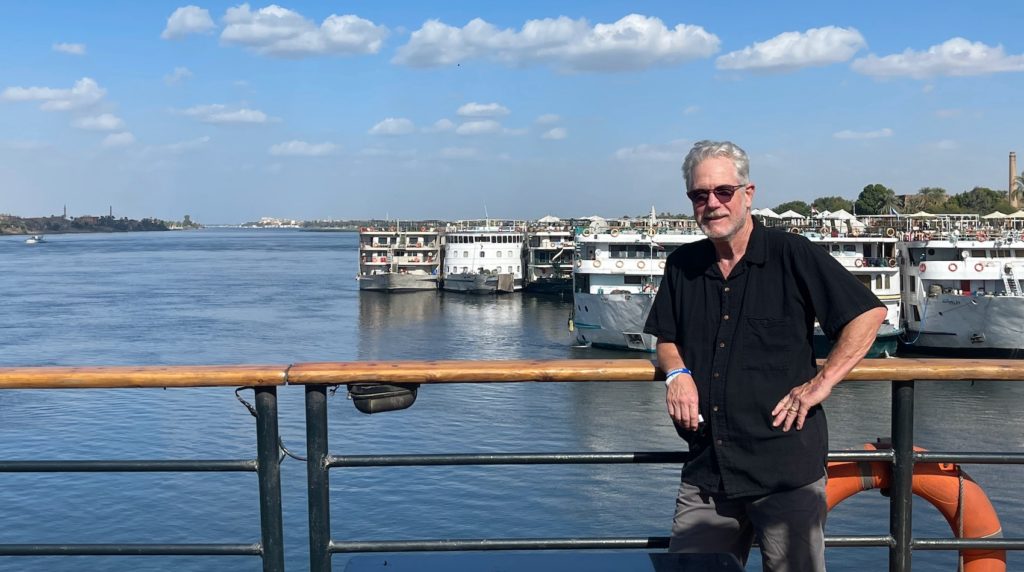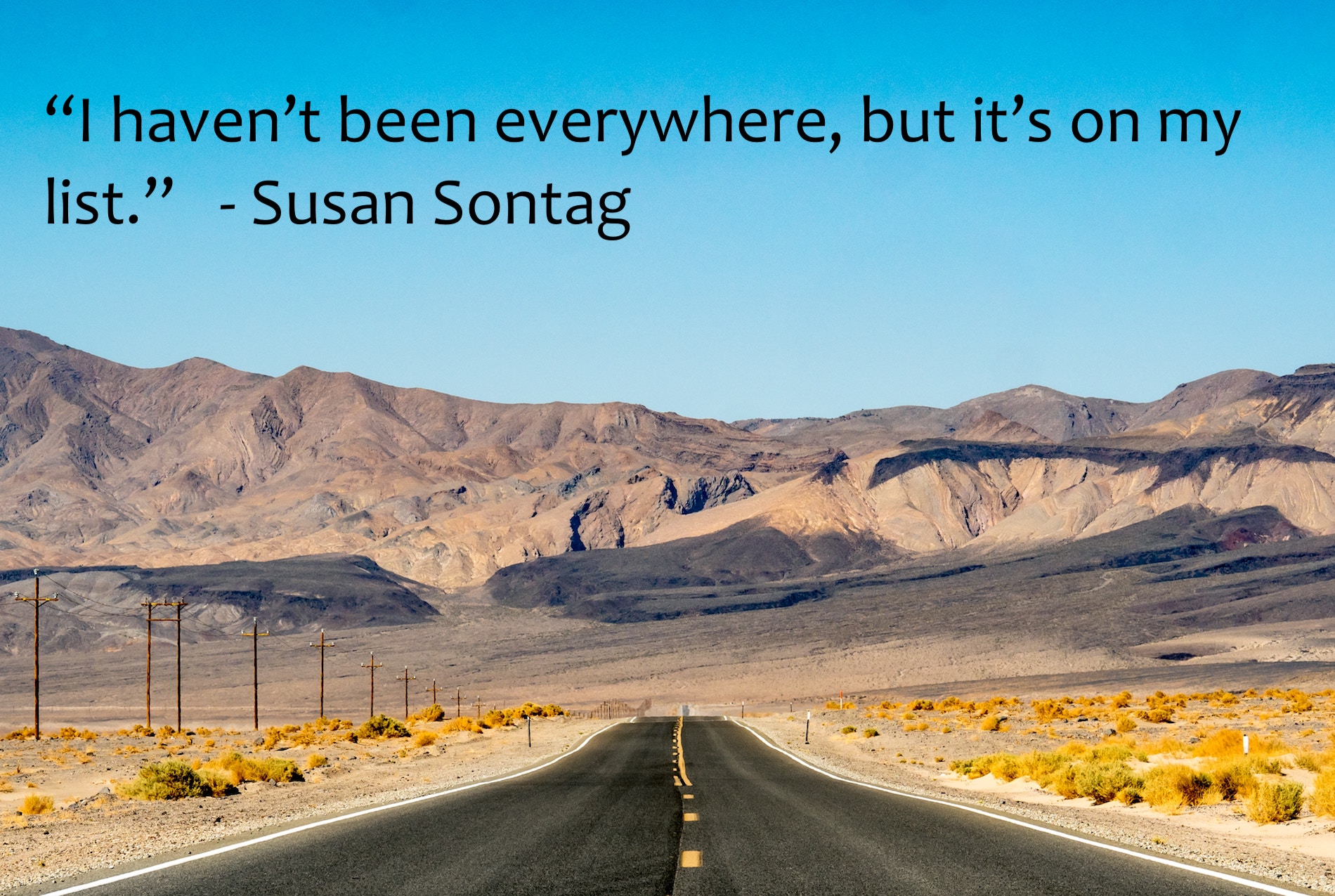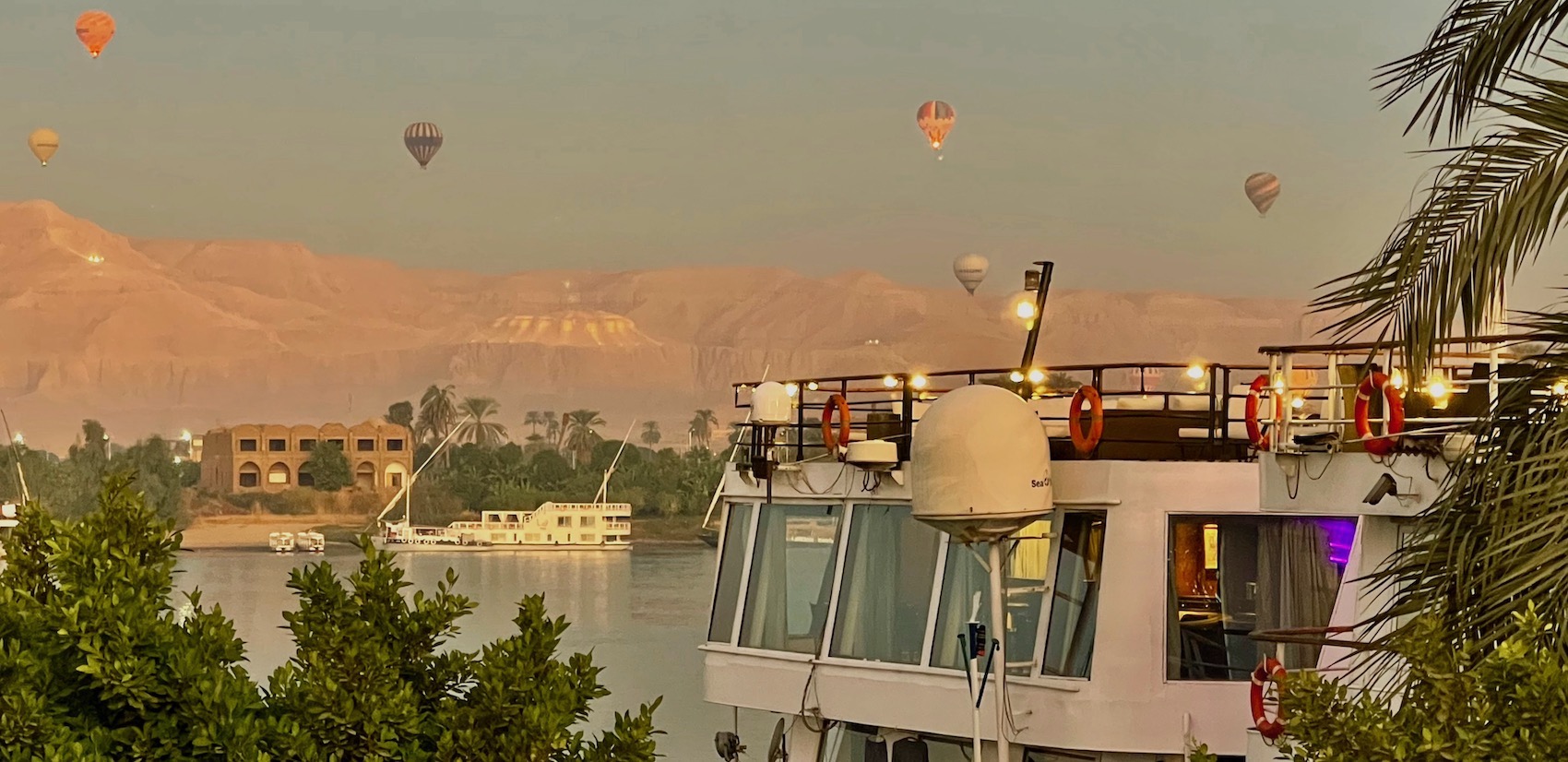
Ancient Egypt: All Aboard the Queen of Hansa, Two Temple Visits, and a Surprise!
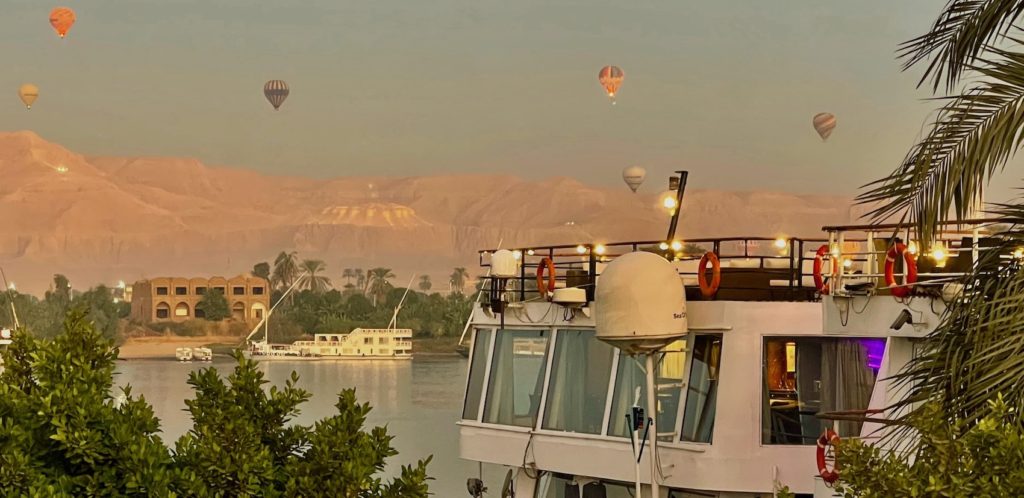
Which one of the sunbathers lounging on the ship’s upper deck might be a devious murderer, I wondered, as I relaxed in the warm Nile River sun?
Is it the mysterious man in the Biden shades, who never says a word? He could be Simon Doyle, the cad who ditched his fiancé to marry the rich socialite.
Or is it the woman with the upswept beehive in a flowery flowing tunic, carrying herself with a regal air? Maybe she’s the romance novelist with a secret personal problem.
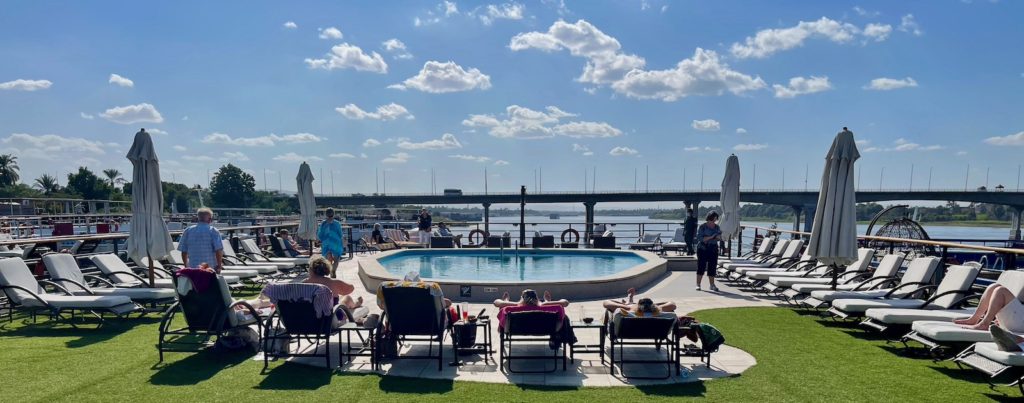
Or is it the pudgy man in professor glasses and safari hat, a dead ringer for an Italian archaeologist with a criminal past and a Mauser automatic pistol under his swim robe?
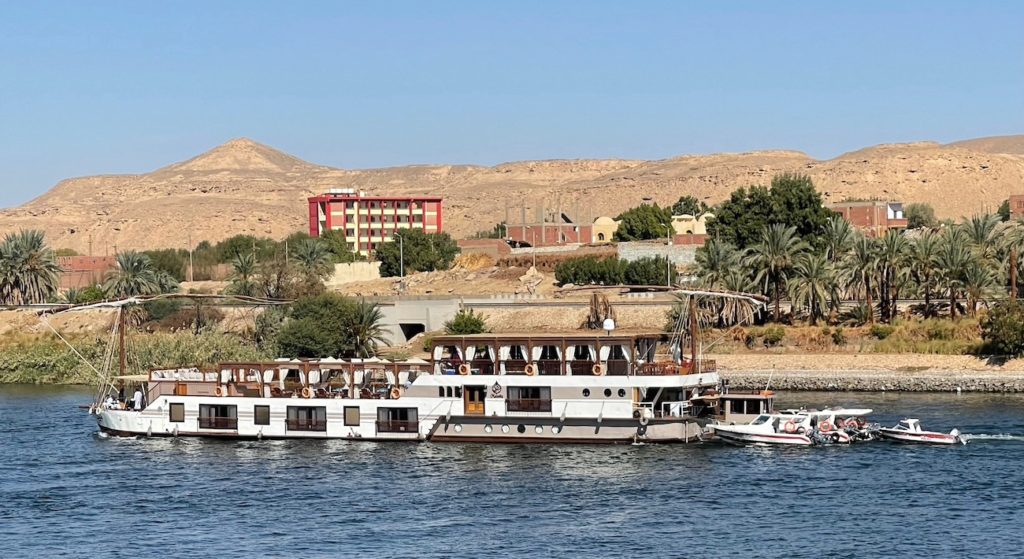
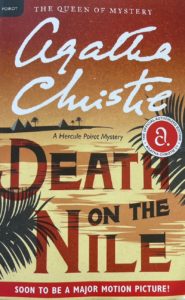
Padre and I both reread Agatha Christie’s masterpiece, Death On the Nile, before our trip, so murder was on our minds as we boarded The Queen of Hansa for the 7-day Nile River cruise portion of our Egypt journey. Turns out our ship had some things in common with the S.S. Karnak, the steamer upon which Christie’s intricate plot unfolds, although we ate buffet (great), and Christie’s S.S. Karnak did not have a gift shop. Our shop was quite tempting – all that dazzling Egyptian gold – and right down the hall from our stateroom.
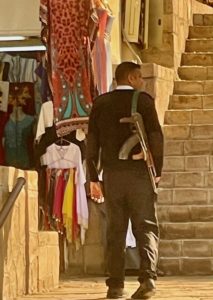
And by the way, how does Agatha do it? She dishes up a myriad of tangled possibilities in terms of suspects, and hooked me from the first page even though I knew who done it. I want to reread every book she ever wrote now, and since I devoured all of her titles at the tender age of 11, the tales will be fresh!
Agatha uses culturally inappropriate references at times – she wrote Death On the Nile in 1937, after all. Mrs. Allerton makes the comment that “If there were only any peace in Egypt I should like it better….you can never be alone anywhere. Someone is always pestering you for money, or offering you donkeys, or beads, or expeditions to native villages, or duck shooting,” and all of that has proved true for us so far, except the duck shooting. But we love it here, not like Mrs. Allerton. She’s one of those constant complainers (we all know one).
Agatha’s riveting mystery story holds up for the ages, though. I mean, what a premise – once everyone’s trapped together on their Nile River boat, who knows what might happen? And things definitely happened once our group boarded our own S.S. Karnak, the Queen of Hansa, sailing south toward Aswan, but first, back to how we got there.
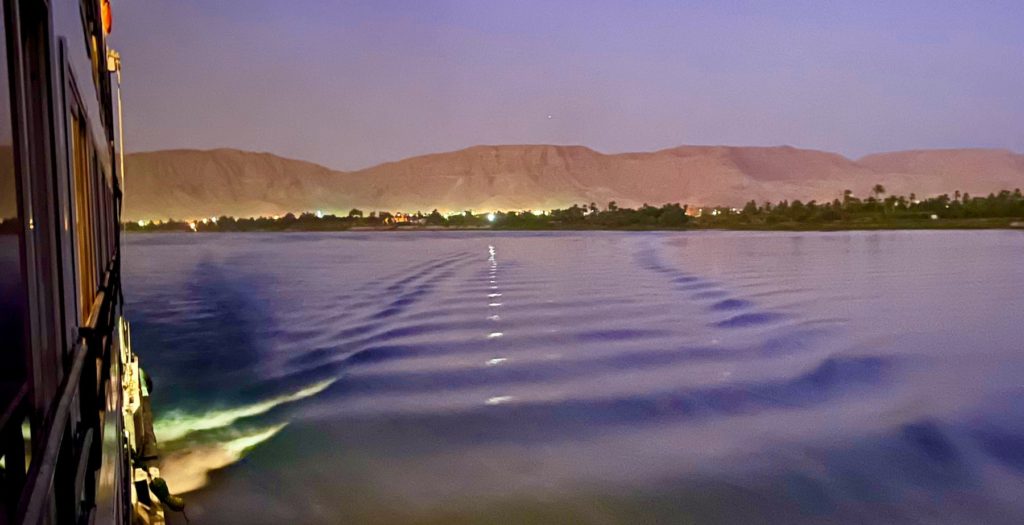
CAIRO TO LUXOR IN THE CHEAP SEATS

Our small tour group gathered in Cairo’s pre-dawn hours to catch a Luxor flight, and our Gate 1 people-wrangler, Neveen, managed our luggage, boarding passes, and one-hour plane ride no sweat. She didn’t lose even one of her 18 bleary passengers, despite our penchant to wander off and make unscheduled bathroom, shopping, and photo-snapping forays.
We exited our plane to Luxor’s bright sunshine, blinking in the warm light as we rattled down the metal plane steps and loaded onto another big beautiful bus for a drive through Luxor to Karnak Temple, ancient Egypt’s ‘Temple Central’ for pharaohs down through the centuries.
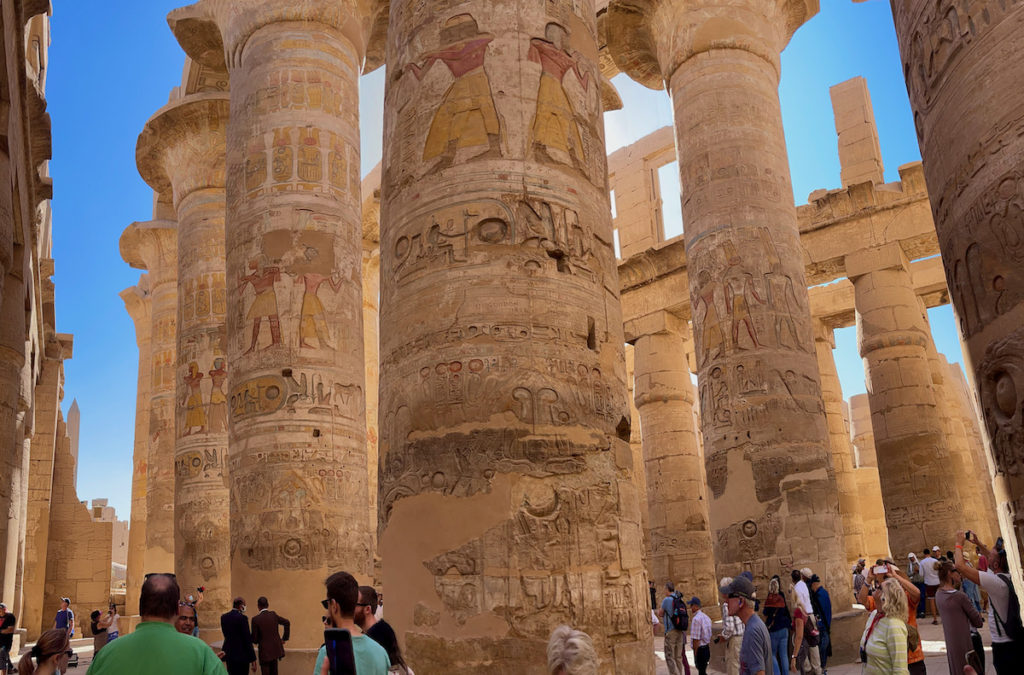
KARNAK TEMPLE: WATCH OUT FOR DROPPING BOULDERS!
In the 1978 film version of Death On The Nile, someone at Karnak Temple pushes a large stone from a high pillar and almost rubs out the lovely Linnet. (In the book, the drop occurred at one of our next stops: Abu Simbal Temple. Spoiler alert: Linnet dodged that boulder but not much else.) On our visit to Karnak we saw massive stones scattered everywhere, although I can’t imagine pushing one anywhere without a crane and a crew.
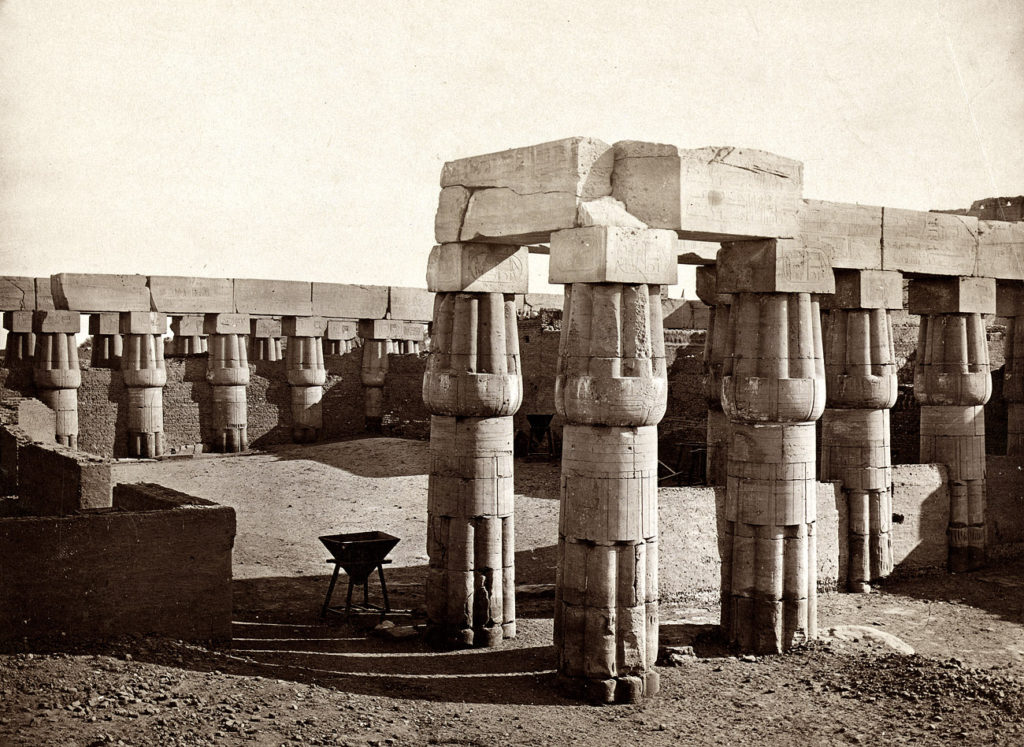
The Karnak Temple complex lay half buried in sand until the 1880s, like most other ancient temples. Yet after extensive excavations its size became clear – over 200 vast acres of sanctuaries, pylons, and obelisks. The complex is so large it could easily hold ten average European cathedrals, and it’s the second largest temple complex in the world, next to Cambodia’s Angor Wat. Excavations also indicated a near constant state of construction, destruction, and rebuilding, and almost every pharaoh of the Middle Kingdom left some mark of their presence. Oh, and don’t forget Gordon – in 1828, he chiseled his name on a pillar here. Wouldn’t want to forget Gordon.
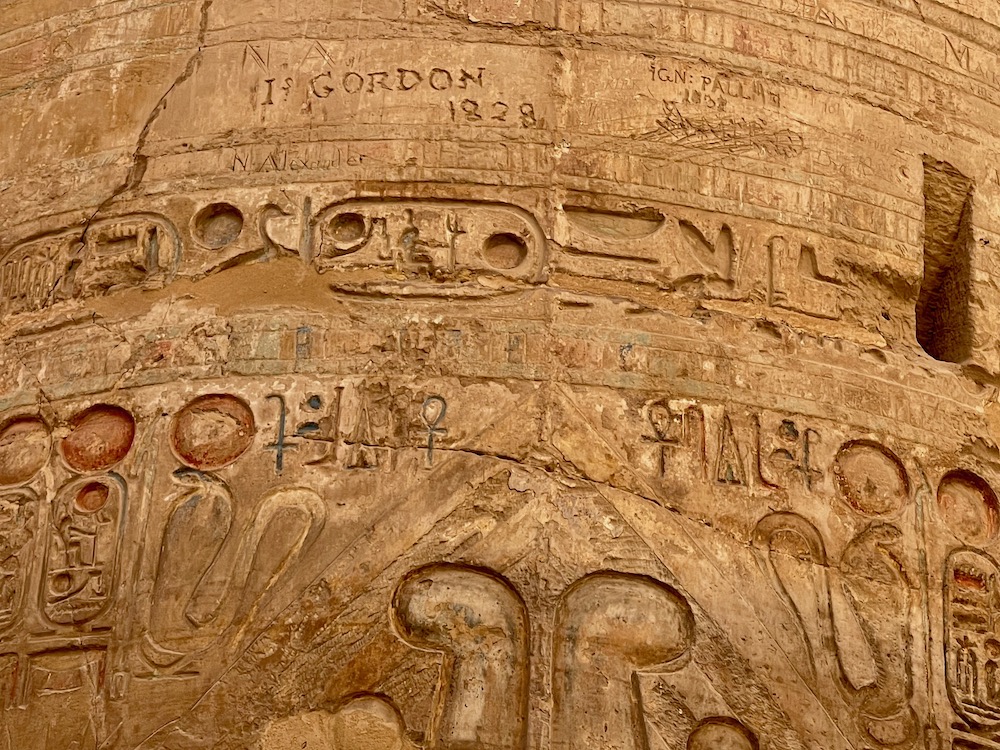
We entered Karnak Temple through the first of eight temple gates, or pylons, which tower up to the heavens to announce each section as you pass through. One of my fave pharaohs, Queen Hapshepsut (1503-1482 BC) erected four obelisks near the fourth pylon, after she declared herself ‘king’ – how brazen of her, to declare herself ‘king’ and she did a darn good job of it, too. No wars, for one. How cool is that?
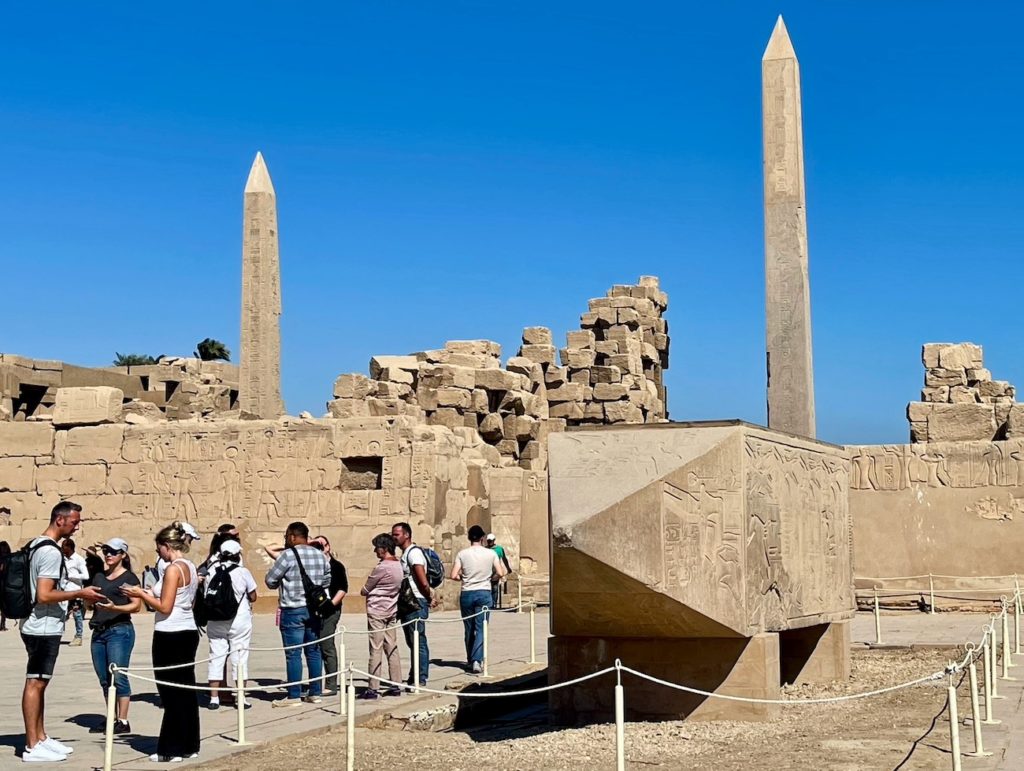
Two of her obelisks remain, one slender peak that towers over the complex, and one that lays sprawled over a large interior courtyard. We know why Hapshepsut installed these, because she wrote a letter to us on one of the obelisks. In her letter, she explains why she put them up:
“I was sitting in the palace and I remembered the One who created me; my heart directed me to make for him two obelisks….that they might mingle with the sky amid the pillared hall between the great pylons…..I acted for him with a straightforward heart, as a king does for any god.”
It is astonishing to me that Hapshepsut’s obelisks are still here, between the great pylons, next to the pillared hall, just as she wrote to us over 3500 years ago. And that she declared herself king? And made a point of calling herself ‘the king’ on her very own obelisk? Well, you go girl. Girls gotta rule, sometimes. They just do. Good for her.
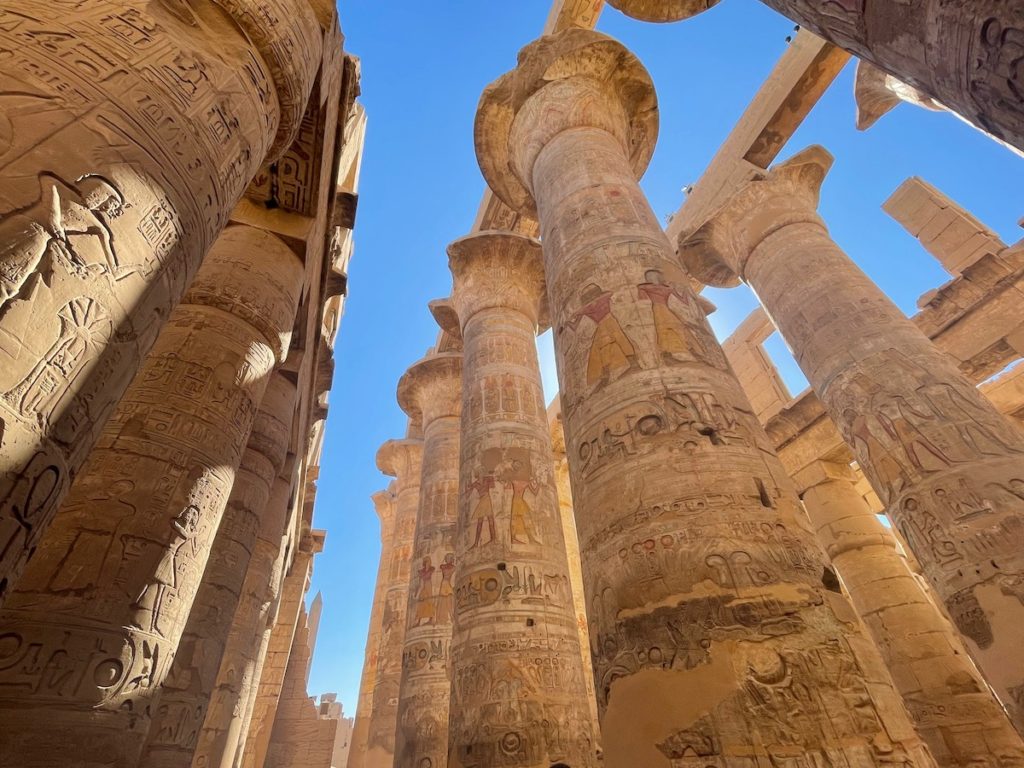
THE VAST EXPANSE OF TIME, AND A SCANDALOUS RIVER CRUISE
At first I thought Hapshepsut was referring to the astonishing Hypostyle Hall we’d just walked through when she made her reference to a ‘pillared hall’ – but nope, not possible. That’s because the famous one wasn’t erected until a couple hundred years AFTER our Queen wrote her letter.
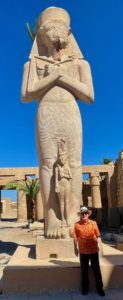
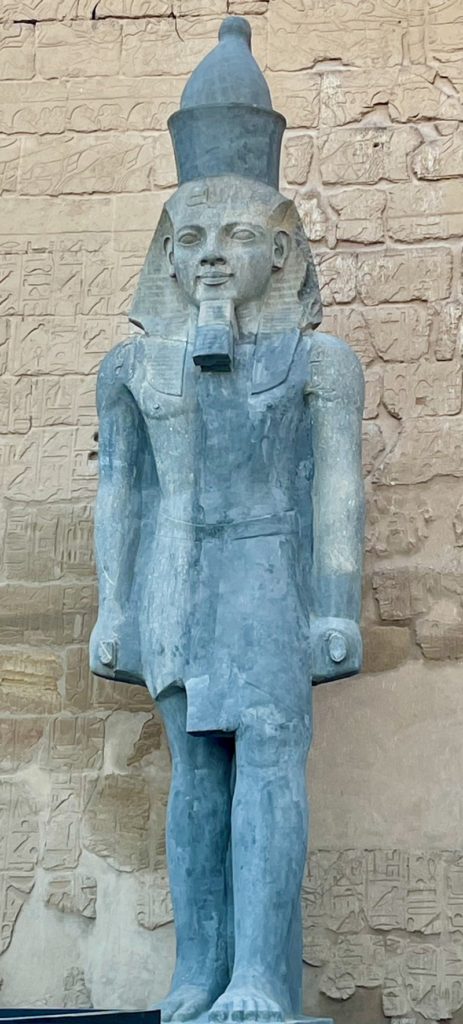
And Ramses II, the guy who likes to go big, did plop two huge statues of himself near the 2nd pylon, not far from Hapshepsut’s obelisks by the 4th pylon, probably attempting to equal her architectural accomplishments. But Ramses had his statues erected almost 200 years after Hapshepsut mounted her obelisks, so he never had lunch with her or anything like that.
So key insight from this trip: Egyptian time sprawls far beyond what’s captured in those World History textbooks I reviewed when I was still had a day job. Traditional textbooks usually have a three-week ‘Ancient Egypt’ unit in them, so no wonder we think ancient Egyptian history is pyramids, King Tut, and Cleopatra, all smushed together.
In reality, the Great Pyramid was built over 1000 years before King Tut’s time, and by the time Tut came to power the Great Pyramid had been abandoned to the desert sands for hundreds of years. And while Cleopatra probably visited Karnak Temple with her lover, Caesar, on that infamous river cruise (archeologists recently found some of her cartouche carvings on the Sphinx Road), her visit came over 1000 years after Hapshepsut erected her obelisks.
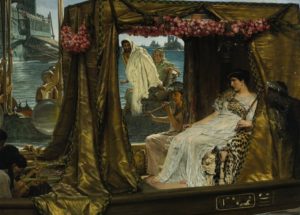
Much more on Cleopatra, the “I will not be triumphed over” pharoah, when we visit Dendara Temple later in the cruise. Cleopatra’s family, the Ptolomys, made the Lannisters of Game of Thrones look like Sesame Street, and she could have played one of Agatha Christie’s villains with ease, I’m sure. I mean she cheered when Mark Anthony executed her sister, and tested out poisons on prisoners before she chose her fatal asp dose, so not a cuddly queen, not at all. But successful? Her fascinating story needs its very own post, at the very least.
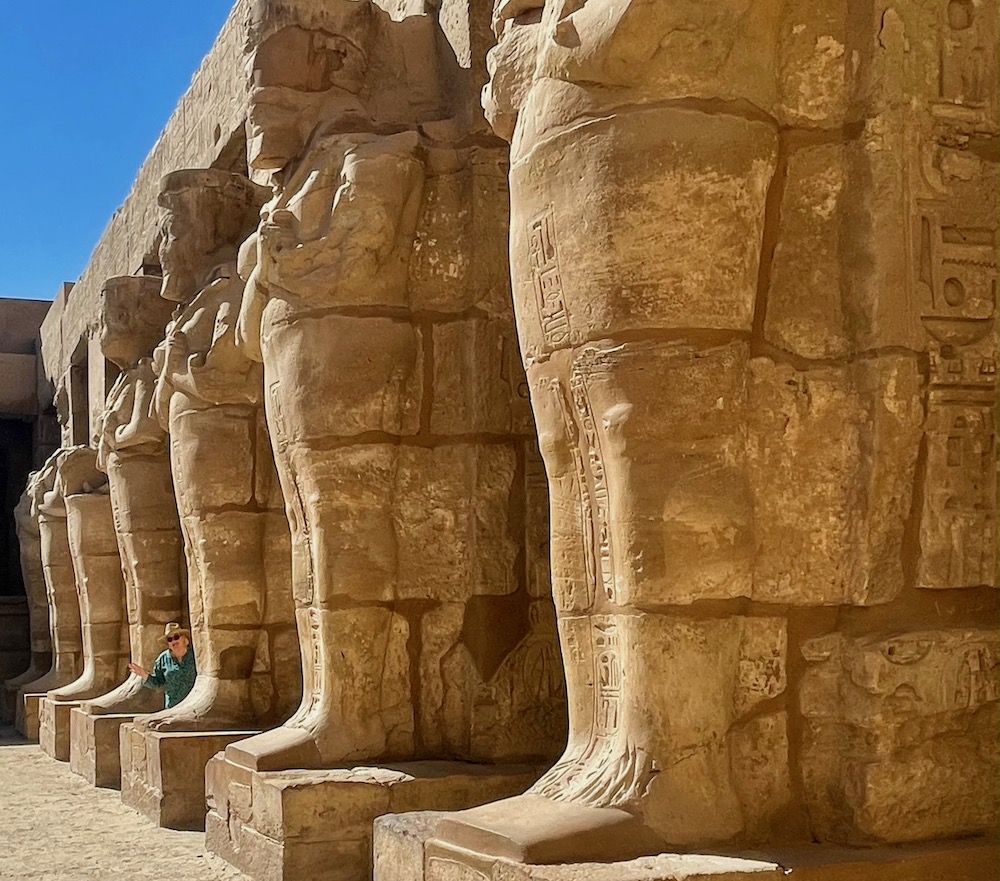
So Hapshepsut and Cleopatra never sat down to lunch together either, but if they had, the girls could have made a day of it gossiping about that scandalous river cruise, when Cleopatra came home pregnant, Caesar’s wife back in Rome with the kids was devastated, etc. etc. I mean, who ever said history is boring was just plain wrong. Plenty of murder and mayhem in those history books if we know where to look. (Maybe they should have let Agatha Christie write the history books?)
Ramses II Wins With the Hypostyle Hall
So what about that Hall? Ramses II eventually outbuilt Hapshepsut here at Karnak, when he completed what his father, Seti I, started: the Hypostyle Hall, an astonishing architectural creation that is considered one of the wonders of the world.
Our guide Naveen enlisted ten of us to wrap our arms around just one of its 134 pillars. Massive! And more cool movie trivia: Roger Moore and Barbara Bach frolicked here among the giant pillars, when they filmed a scene in the James Bond thriller The Spy Who Loved Me. The spies and bad guys dodged bullets as they slipped from pillar to pillar playing deadly hide-and-seek, automatic weapons pinging every which way. Maybe they should have just tipped over a boulder or two, Agatha Christie-style, perhaps?
Avenue of the Sphinxes and Luxor Temple: No Glitzy Hoopla for Us!
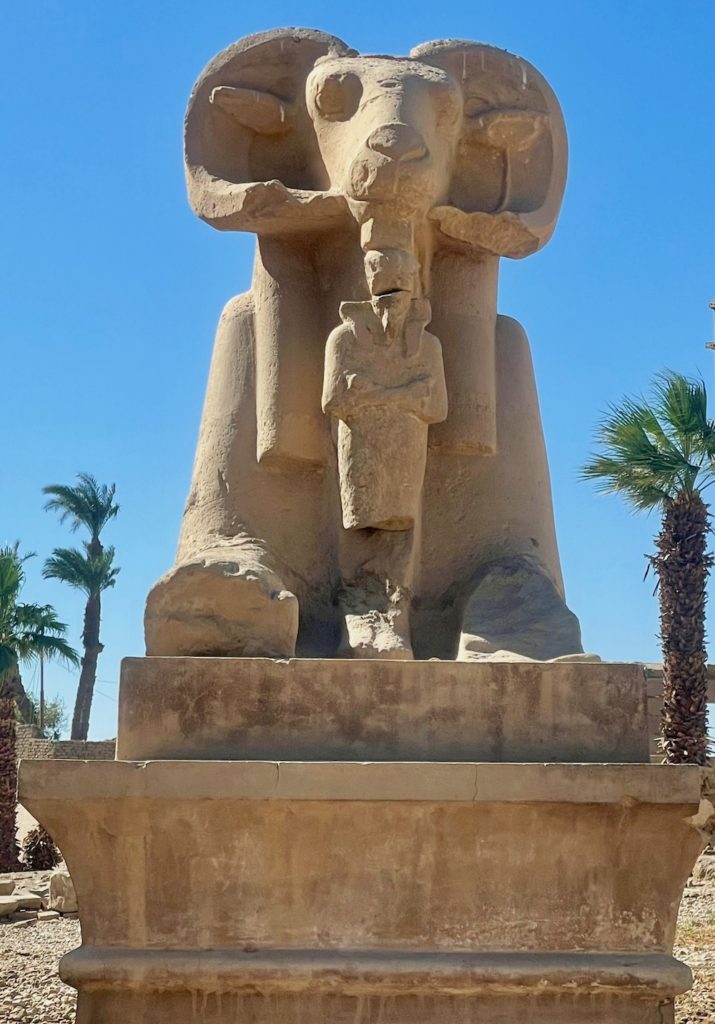
The first thing we saw when we approached the Karnak Temple complex was an astonishing avenue of lion-bodied ram statues on either side. Even though it was the first thing we saw at Karnak Temple, I saved it for last since it connects to the next stop on our agenda: Luxor Temple.
And I mean literally connects, since Karnak and Luxor temples are joined together by a 3 kilometer-long avenue lined the whole way with 900+ sphinx statues on both sides. In elaborate processions, the ancient Egyptians hauled sacred statues and ceremonial boats back and forth between the temples on this road. So not an ordinary road, and probably not for donkey carts or peasants like us, back in the day.
The Avenue of the Sphinxes runs right through the heart of Luxor town proper, and the fully restored road opened to the public for the first time ever a few days after our visit. We just missed the big ceremony, but we did see last-minute preparations while touring Luxor Temple, as we scrambled over electrical cords and dodged construction equipment laying everywhere.
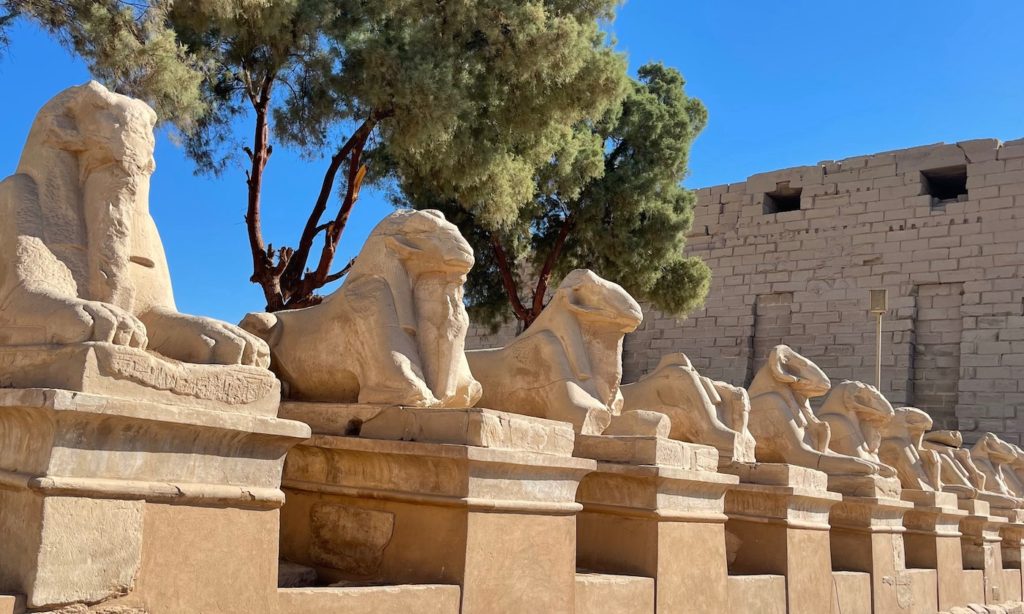
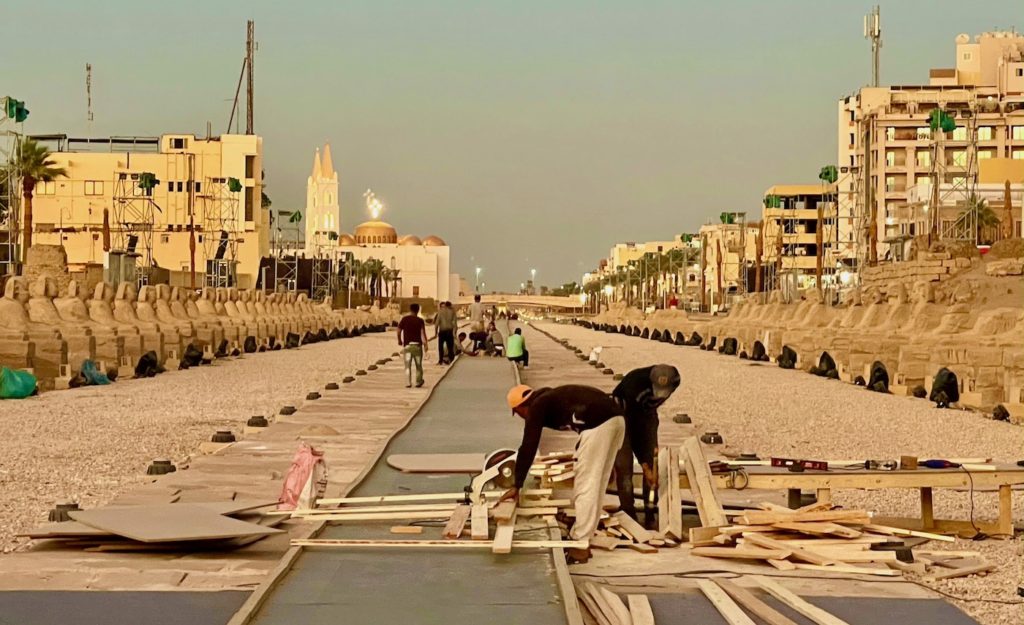
And surprise! Our guy Ramses II did his thing here at Luxor Temple. His colossus-sized statues dominate Luxor Temple’s façade, and elaborate scenes of his most important battles decorate the walls inside and outside. Ramses II didn’t build Luxor Temple, though: Amenhotep III, Tutankhamun, and Horemheb did, but since Ramses II got to finish it, he plastered his image all over it and repurposed other statues to feature his own image. The usual.
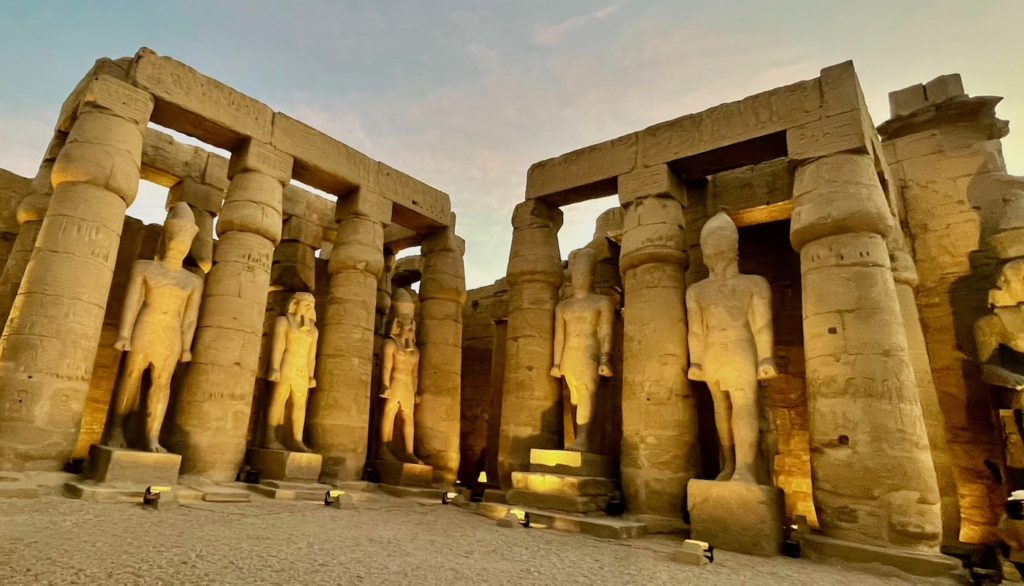
One small detail shows how concerned Ramses II was with his legacy, though. At Luxor Temple stone engravings are carved extra deep, which makes them almost impossible to carve over. Since Ramses carved over so many other pharoah’s engravings, maybe he realized he had to erase-proof his own to make his legacy last?
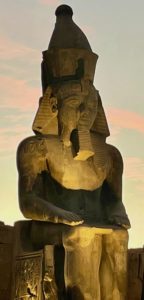
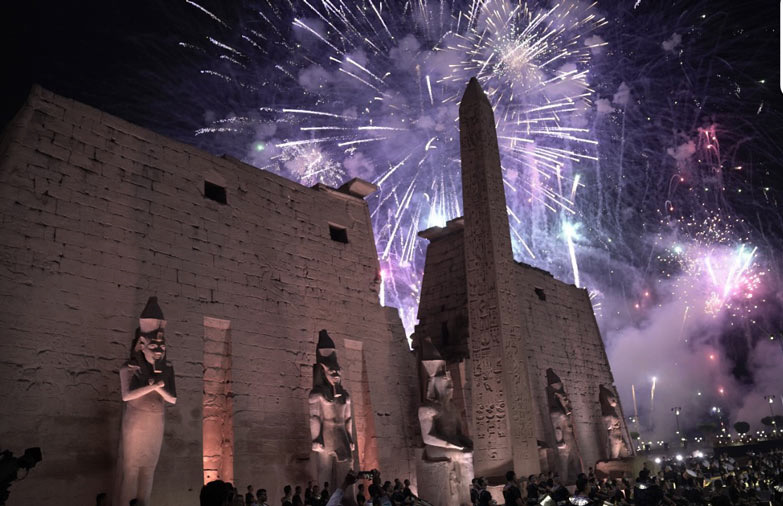
Ramses II succeeded in the legacy-lasting thing somewhat since we know his name today, but not in a good way due to Shelley’s Ozymandias poem, remember. Leave it to those poets to put the stamp of truth on history. No wonder dictators arrest all the artists when they seek to consolidate power, since artist-types can stir up a whole heap of trouble with all that truth-telling, can’t they? That said, Luxor Temple is simply beautiful despite all the Ramses II images, especially at night when the lights come on and bathe the ancient stones in deep shadows.
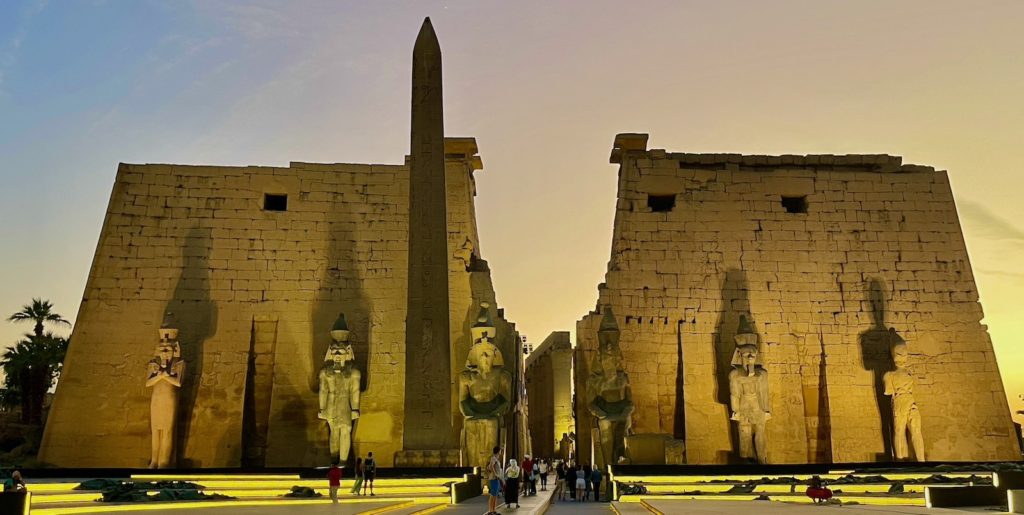
All Aboard the Queen of Hansa, and a Dinner Surprise
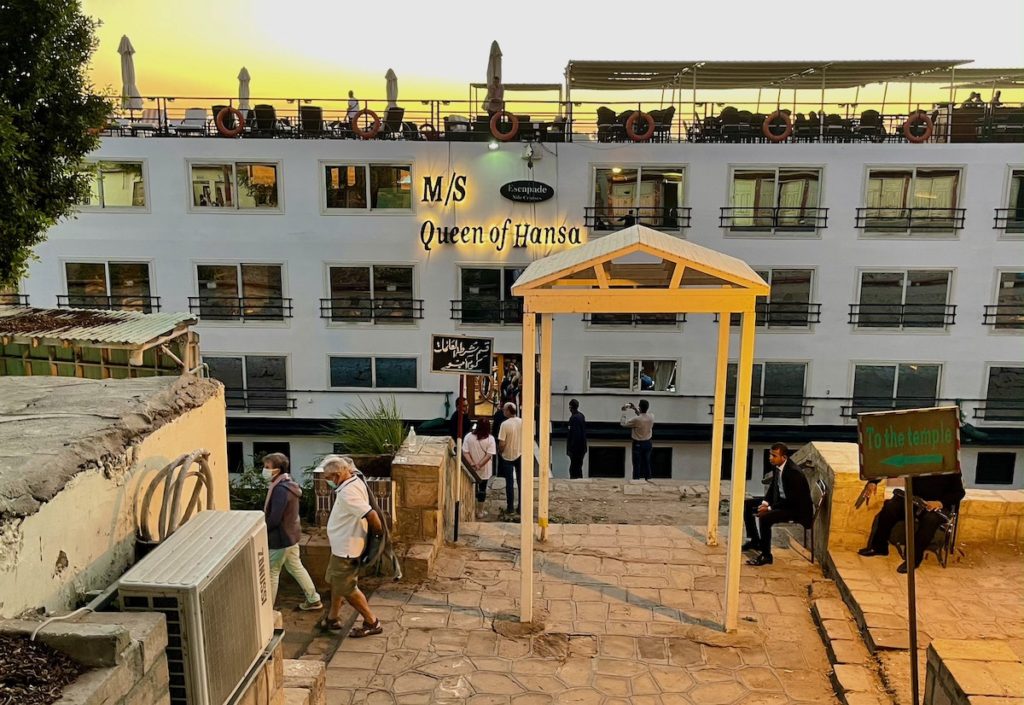
So when these weary travel warriors finally reached our quiet cabin, we were ready to flop on our comfy beds and go lights out. But wait – there was more, because this wasn’t just any Day on the Nile: It was Padre’s birthday. I told him earlier that all he got for his birthday was a trip to Egypt, so he better be ok with that. Not even a card.
Yet no rest for us just yet, because we had one more surprise in store: A joyful, full-throated Happy Birthday serenade in Arabic, from the crew, and cake! Padre’s favorite!
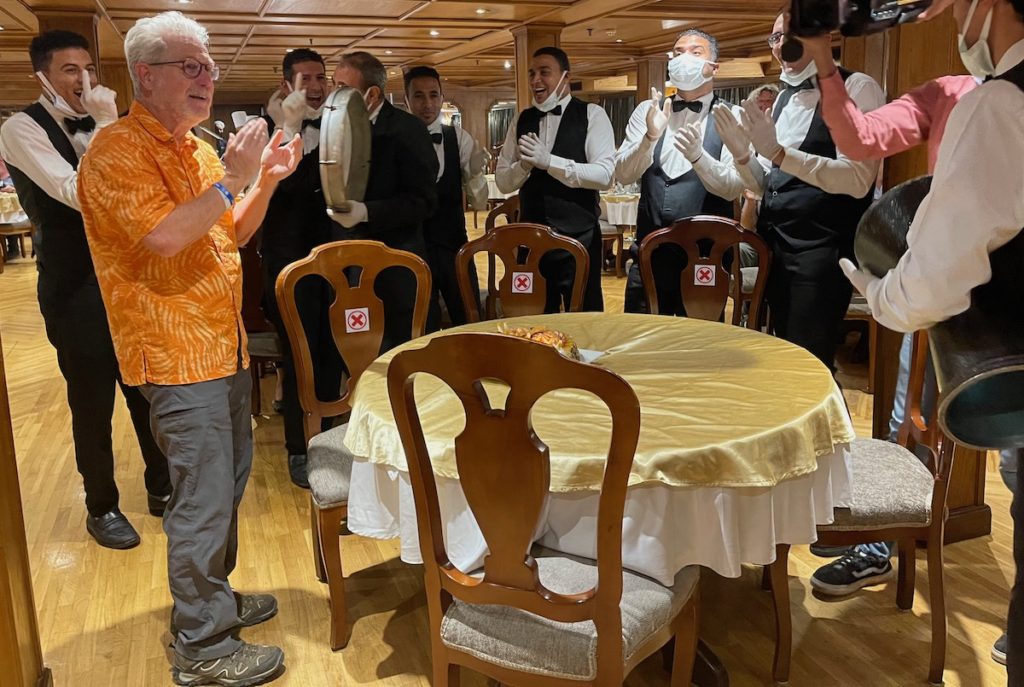
The Queen of Hansa crew had only been back on the job a couple weeks, so their enthusiastic singing turned the dining room into happy party central, much joy and laughter all around. From then on, the crew would fist-bump Padre every time he came into the dining room, and I suspect they may have adopted him as a favorite, which makes sense; He’s certainly my fave, even though I didn’t get him a card.
Happy Birthday, Padre – you’ll remember this one, for sure.
Whew! Long day, but we need to be well rested for what’s coming up; The Valley of the Kings, Hapshepsut’s Mortuary Temple, and the Colossi of Memnon. Too much? Naw.
Thanks as always, everyone, for following along!
